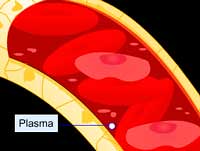Our bodies’ immune systems naturally produce nitric oxide (NO). It’s interesting to learn that NO is also known as a “potent anti-microbial agent against bacteria, viruses, fungi, and parasites.” Maybe that’s because up til recently no one’s tested how safe it is to give to humans at levels that would actually kill microbes.
But now a new study has proved NO is indeed safe to use in otherwise healthy adult human beings. According to an item in Health Canal about NO as an antibacterial agent, the study, reported in a recent edition of the Journal of Cystic Fibrosis, says that volunteers “show no adverse effects associated with therapeutic antimicrobial concentrations of nitric oxide” inhaled as directed over a period of a week. The study was conducted through University of British Columbia Faculty of Medicine and Vancouver Coastal Health Research Institute.
All the test has done is prove it’s safe to use NO inhaled according to that protocol. Now the real work begins. Researchers will likely choose to focus first on seeking out and developing a way to use inhaled NO to treat cystic fibrosis and tuberculosis, both resistant pulmonary infections. Another study reported in New England Journal of Medicine showed that inhaled NO positively affected certain measures in people with acute lung injury, but so far it hasn’t demonstrated that anyone will live longer. More tests are needed.
Reminds me of the biography of President James Garfield I just finished. Garfield survived two months after his assassin’s bullet entered his body. This was at a time when Lister had proven the effectiveness of practicing antisepsis, European doctors were all using it, and American doctors dismissed it as poppycock. Garfield suffered terribly after his doctors repeatedly inserted unwashed, unsterilized fingers and probes into his wound. His body eventually totally encapsulated the bullet, which hadn’t hit any vital organs. He could easily have survived his wound, but he died an agonizing long-drawn-out death from all the infections his doctors had introduced.
Who knows who will live one day when all the amazing discoveries we are making at this time are finally translated into useable therapies.


















